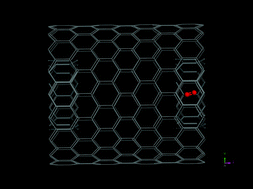Kinetic modelling of molecular hydrogen transport in microporous carbon materials†
Abstract
The proposal of kinetic molecular sieving of hydrogen isotopes is explored by employing statistical rate theory methods to describe the kinetics of molecular hydrogen transport in model microporous carbon structures. A Lennard-Jones atom-atom interaction potential is utilized for the description of the interactions between H2/D2 and the carbon framework, while the requisite partition functions describing the thermal flux of molecules through the transition state are calculated quantum mechanically in view of the low temperatures involved in the proposed kinetic molecular sieving application. Predicted kinetic isotope effects for initial passage from the gas phase into the first pore mouth are consistent with expectations from previous modeling studies, namely, that at sufficiently low temperatures and for sufficiently narrow pore mouths D2transport is dramatically favored over H2. However, in contrast to expectations from previous modeling, the absence of any potential barrier along the minimum energy pathway from the gas phase into the first pore mouth yields a negative temperature dependence in the predicted absolute rate coefficients—implying a negative activation energy. In pursuit of the effective activation barrier, we find that the minimum potential in the cavity is significantly higher than in the pore mouth for


 Please wait while we load your content...
Please wait while we load your content...